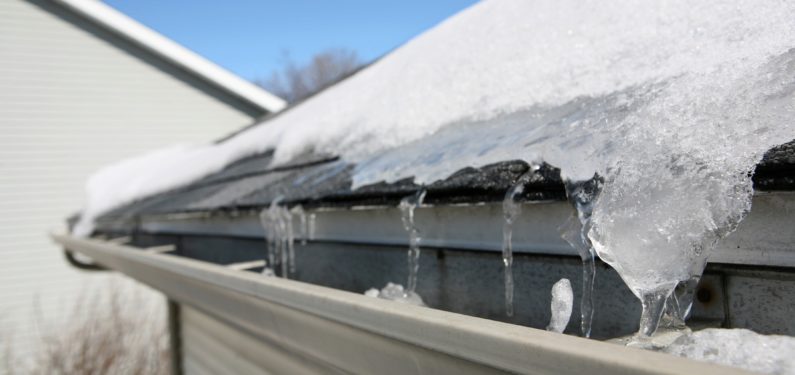
5 Signs You Don’t Have Proper Roof Ventilation
Posted on February 20, 2020In many ways, your home’s roof is its first line of defense against the elements. So, if your roof is failing to protect your home, it isn’t something to procrastinate about. Additionally, roofs that are installed poorly, or incorrectly, can also become a problem and may require maintenance, repair, or replacement. Proper roof ventilation is important. As such, it’s important to be aware of the signs you don’t have proper roof ventilation.
Poor roof ventilation is a problem that is probably not on the radar of many homeowners, even though it can lead to serious issues within their home. This is probably because “out of sight, out of mind” is a real phenomenon. However, there are a few very obvious signs and symptoms of poor roof ventilation for which homeowners should be on the look-out. Here are some of the big signs you don’t have proper roof ventilation:
1. Visible Exterior Damage From Moisture
If your roof is showing external signs of damage or decay, there has most likely been some ventilation and moisture management problems occurring for quite some time.
If shingles are falling off, decking is soft and rotted from exposure to the elements, or soffit and fascia are falling off or deteriorating, these can often be signs of moisture from within the home causing significant structural issues and damage to the home’s exterior.
This is why visible exterior damage from moisture is one of the signs you don’t have proper roof ventilation.
2. Excessive Temperatures Inside the Home
Roofs that don’t have proper ventilation really fail at one of their intended purposes – helping to maintain interior temperatures. Not only is the roof supposed to keep the elements and precipitation out of the house, but it also needs to let hot air escape in the Summer months without letting it in so that the home is as energy-efficient as possible.
When roofs aren’t vented properly, hot air builds in the attic space and has nowhere to go. This eventually raises the temperature of the interior living spaces of the home and will make the home less comfortable. It can also cause the HVAC unit(s) to work overtime. This, then, greatly increases energy costs during times of extreme weather conditions.
For this reason, if you are noticing that your home is having a difficult time maintaining a regulated temperature, it might be a sign that your roof ventilation is not up to par. Attic ventilation issues and improper roof ventilation are common winter roofing problems.
3. Moisture in the Attic
One of the reasons why proper roof ventilation is important is to prevent and reduce moisture buildup inside the home. If you are noticing moisture in the attic, such as condensation on trusses or roof decking, it is very likely a sign of a poorly ventilated roof.
If this moisture build-up gets severe enough, it can lead to permanent roof and even interior ceiling damage that can be costly to remediate. It also can lead to rot, mildew, and even the growth of dangerous types of mold. Poor roof ventilation is one of the ways you could be encouraging mold growth in your home.
It’s a good idea to periodically check the state of your attic space in order to ensure that moisture isn’t building up anywhere and that it isn’t showing any of the other signs you don’t have proper roof ventilation.
4. Ice Dams During the Winter
Ice builds up on a roof when poor or inadequate roof ventilation causes an overly warm attic. This occurs when the heat inside the attic melts the snow on the roof and then it refreezes in the gutters and forms an “ice dam”. Moisture then backs up onto the roof behind the dams and under shingles, which can cause extensive roof and other interior damage.
5. Visible Damage from Moisture Inside the Home
If you are seeing signs of excess moisture around the interior of your home, such as peeling or blistering paint or flattened attic insulation, it is a good sign that your home’s ventilation system is compromised, failing, or was never installed correctly to begin with. Damp insulation, which has drawn moisture from a poorly ventilated attic, functions far less effectively and becomes very energy inefficient.
Likewise, this moisture can compromise drywall and lead to sagging ceilings or paint damage. If you see any of these signs in the interior areas of the home, there is no time to waste. Proper roof ventilation is imperative and, when you start to see damage like this in your home, it should immediately be put at the top of the list for your home improvement priorities.
Repair or Replace Your Roof With Zephyr Thomas
Looking over your roof and home like this is a great addition to any New Year home maintenance checklist and something to keep an eye on throughout the year. Are you seeing any of these signs you don’t have proper roof ventilation in your home?
If you see these red flags, don’t panic. A licensed, experienced, and reputable home improvement contractor will be able to evaluate the current damage, potential for future damage, and then further discuss a timeline and realistic budget for implementing improvements to this vital area of your dwelling.
If you need assistance in evaluating whether your roof may have a ventilation issue, give one of our reps a call at (717) 399-4708 and we will be happy to help you out while also ensuring that the whole process is as painless, stress-free, and as easy as possible!
